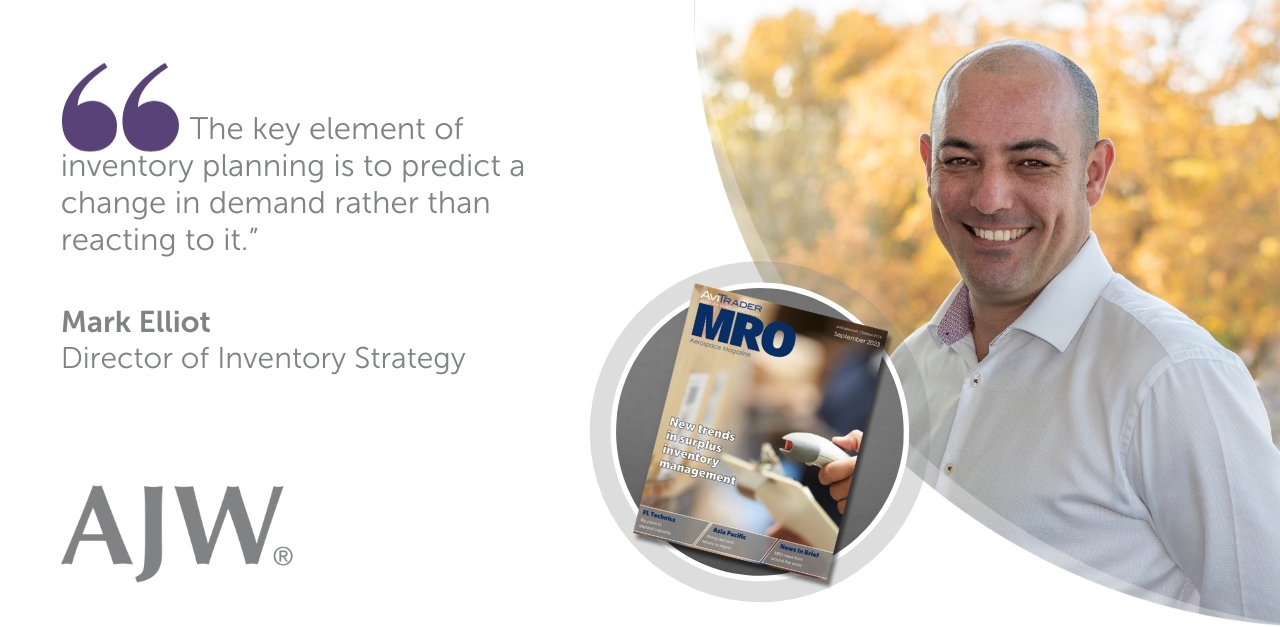

24/7 AOG Critical Response
Hotline![]() UK +44 1403 798888US +1 877 780 2008
UK +44 1403 798888US +1 877 780 2008
Our award winning global AOG service is manned 24 hours a day, 365 days a year.
Please call +44 1403 798888 or email aog@ajw-group.com.

19 Sep 2023

The aviation industry is making a steady recovery post-pandemic and businesses have learned to adopt more flexibility in the face of ever-present challenges and persistent supply chain delays. How are industry stakeholders building agile inventory management plans?
In the September issue of AviTrader MRO, editor Keith Mwanalushi speaks to AJW Director of Inventory Strategy, Mark Elliot, about how the disruptions in the aftermarket supply chain are driving MROs and parts suppliers to change their inventory management systems.
Mwanalushi states that while the appetite for aircraft parts is growing, the aviation industry is facing significant changes in part services. There is a global shortage of parts and line replacement units (LRUs), and OEMs are unable to meet industry demand. This situation is likely to remain in place for the foreseeable future resulting in businesses finding innovative ways to overcome stock and supply chain challenges.
Companies are adopting more flexibility and finding alternative solutions to maintaining stock levels. AJW’s Mark Elliot suggests market circumstances are offering a different perspective on the issue of changes in parts services.
He says certain parts are flying off the shelves but in other situations, the demand exceeds supply due to the ongoing supply chain challenges; as such organisations are willing to loan or exchange components, but less willing to sell them. Elliot speaks about finding a balance when trading and AJW Group tries to ensure a stock holding for customers by predicting these situations and being aware not to constrain trading activities, while also having items available for sale or lease.

Elliot predicts that despite supply chain challenges driving inflation and market prices, things should return to a more normal equilibrium level with lower volatility over the coming year or two.
He continues discussing the sophisticated statistical and probability-driven internal inventory optimisation tools used by the Group and explains,
“We take a forward-looking, proactive strategic approach to ensure we invest in the right areas to support our forecast business growth. This forward focus minimises the need to react to changes in demand or supply.”
He revisits finding a balance when investing in stock, where companies may be willing to take a risk, and where not, and discusses AJW’s global stock availability and access to units that can be harvested for piece parts to ease vendor supply chains thereby allowing the continuation of maintenance schedules. In Elliot’s opinion,
“The key element of inventory planning is to predict a change in demand rather than reacting to it.”